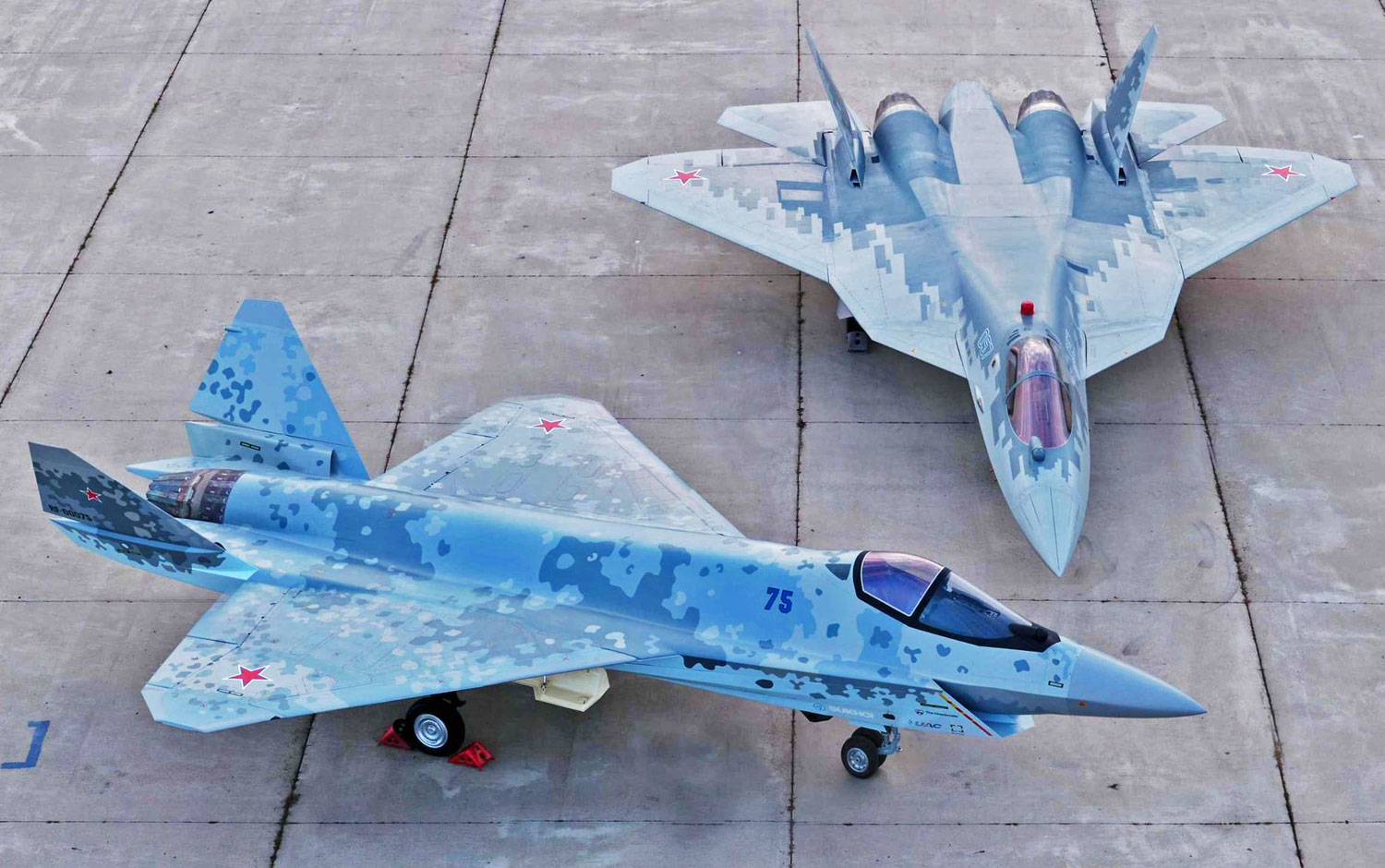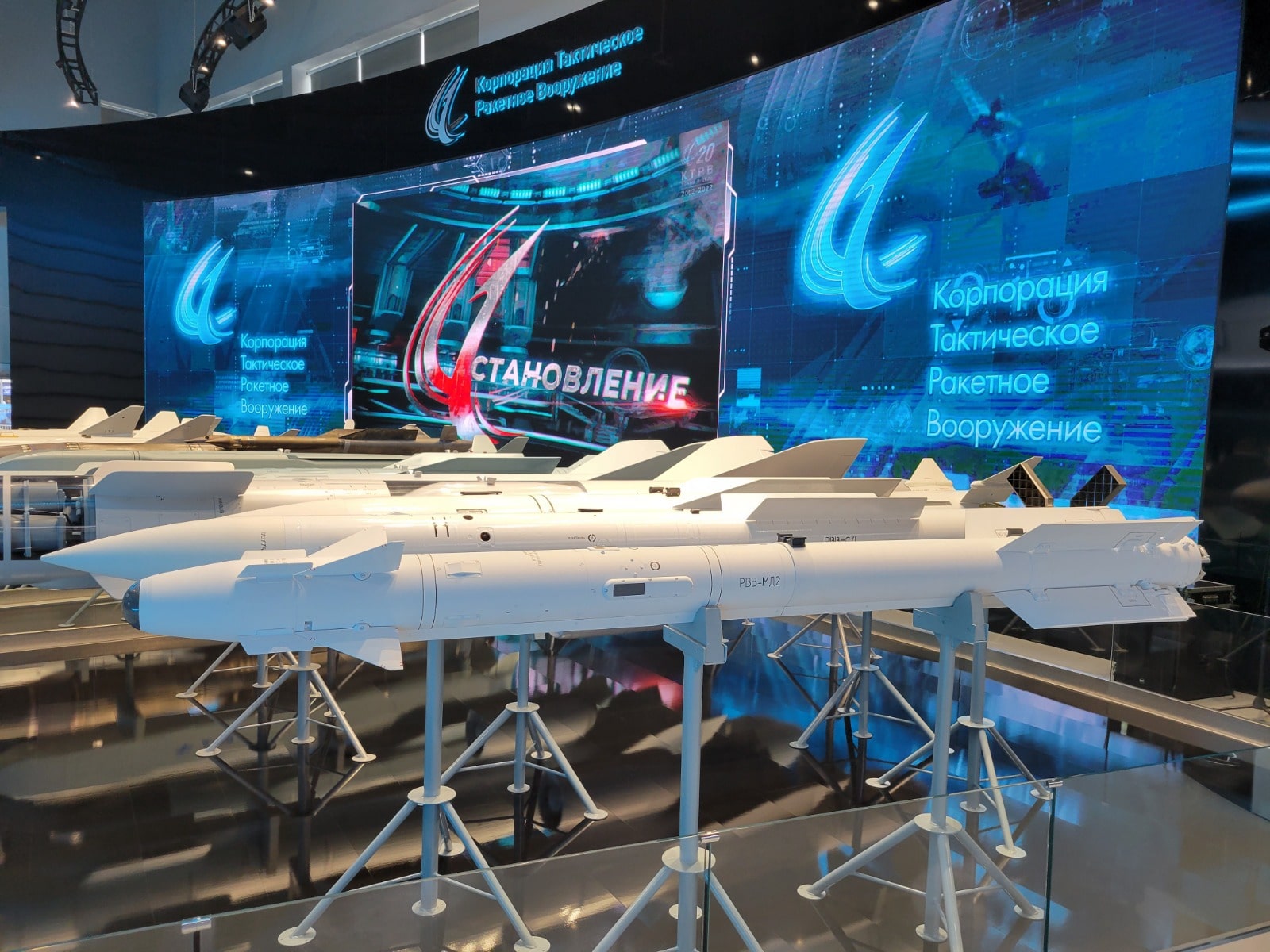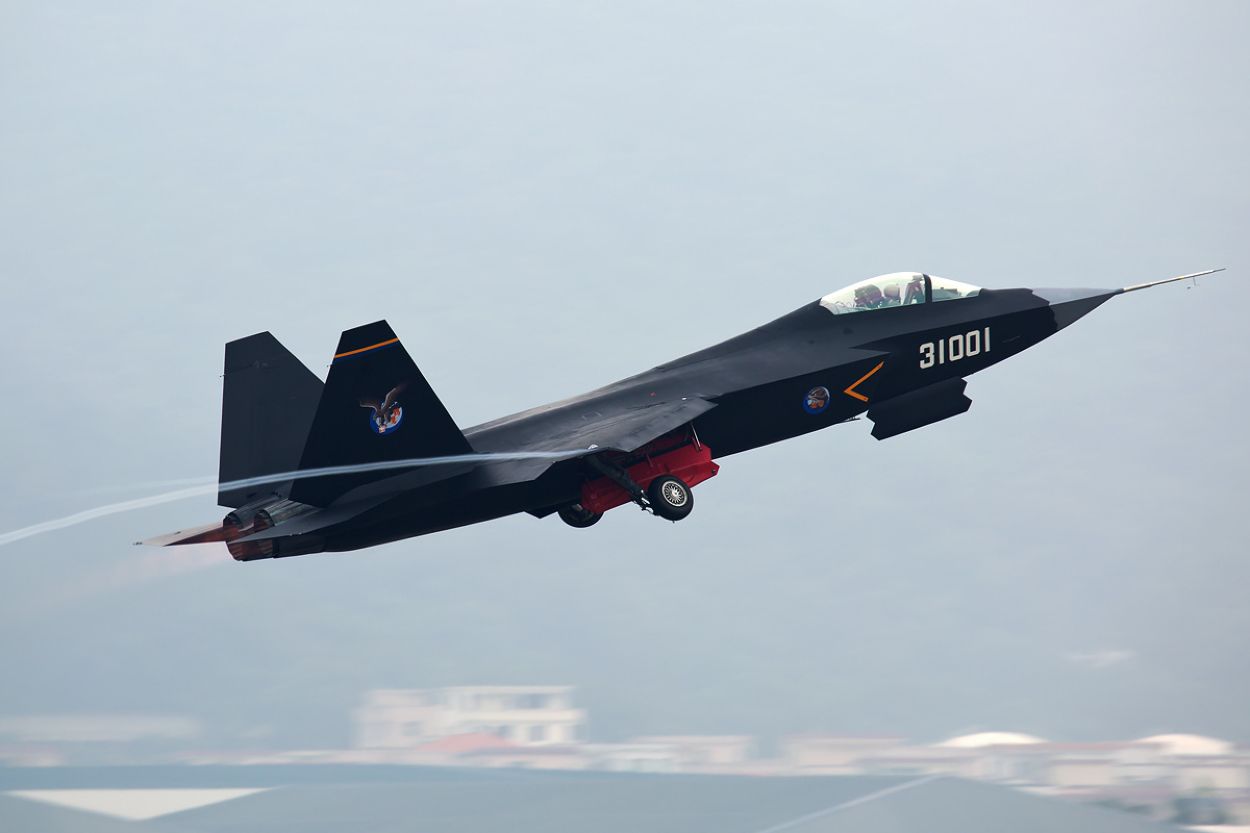Russian defense industry officials have suggested agreeing to integrate the RVV-MD2 short-range air-to-air missile (AAM) with the under-development Su-75 Checkmate fifth generation fighter. Moscow is pitching it to developing countries as an affordable fifth-generation fighter.
The RVV-MD2’s guidance and maneuvering features have been assessed to be unique and pioneering in many respects, not present with current Western visual-range (WVR) missiles. At the recently concluded World Defense Show in Saudi Arabia, officials reiterated the single-engine lightweight stealth jet can be heavily customized to adapt a variety of missiles and electronics based on a country’s need.
Rosoboronexport CEO Alexander Mikheev, while speaking in the context of potential export opportunities for the Su-75 Checkmate, said, “Foreign partners want to jointly develop a light fifth-generation Checkmate fighter with Russia, and the possibility of integrating avionics and weapons is being discussed.”
Mikheev said Rosoboronexport’s “foreign partners” are “interested in jointly developing the Russian light tactical fifth generation Checkmate aircraft.” It scores over “its few foreign analogs” with “open architecture” features. In a joint technological development and manufacturing deal with a potential customer, it “allows” creating “a promising aircraft that is maximally adapted to customer requirements.”
World’s Best Short-Range AAM Offered
In addition, Mikheev noted, Rosoboronexport offers a wide range of “aviation weapons” “specifically for fifth-generation aircraft,” which “include the possibility of intra-fuselage placement to reduce visibility and increase the radius of combat use.”

“The RVV-MD2 and RVV-BD air-to-air guided missiles and the Kh-69 cruise missile were recently presented abroad for the first time as such aviation weapons,” the agency’s interlocutor said. The offer to integrate these advanced missiles is consistent with the last few reports about the Su-75 Checkmate. These declared design modifications and a special camouflage for the aircraft.
In July 2023, the United Aircraft Corporation (UAC) filed a series of patents with Russia’s Federal Intellectual Property Service (FIPS), revealing modifications to the original Su-75 design, including a two-seat tandem variant and an unmanned variant.
There was extension and angling of the wing’s trailing edge, resulting in an increased wing area and potentially a slight reduction in the aircraft’s rear radar signature. Additionally, there seemed to be a slight advancement in the engine installation. The fuselage also appeared to have been redesigned, possibly to increase the internal capacity.
This hinted at enlarged side armament bays for housing short-range AAMs air-to-air missiles or an increased internal fuel capacity for the Checkmate – or both. UAC also introduced a “single-engine two-seater stealth aircraft.” Similar to other two-seater Sukhoi models, the tandem cockpit had the rear seat elevated to provide improved forward vision.
Enter the RVV-MD2
The RVV-MD2 was first unveiled during the Armiya 2023 exhibition and was reported to have been designed for the Su-57, to be launched from its internal bays. Russia claims the RVV-MD2 to be at least five years ahead of its Western counterparts, primarily being the first short-range AAMs to have an Inertial Navigation System (INS).

An INS can control and stabilize the missile during autonomous flight. It autonomously determines its coordinates in space without relying on external signals. The missile also has a “radio correction” line, allowing the launching aircraft (the Su-57) to update the target’s coordinates. Its multi-element dual-band infrared seeker with improved noise immunity also makes it less susceptible to electronic warfare (EW).
The RVV-MD2 can, therefore, engage targets from all angles – forward, sideways, and behind the Su-57, taking a complete 180-degree turn – making it the first such missile. Basically, the high off-boresight capability, possibly cued from a helmet-mounted display (HMD) pilot headgear – when it becomes a common feature across Russian Generation 4.5 and 5 fighters – will be a deadly combination during dogfights.
In a tight ‘turning’ fight, if the Su-57 or the Su-75 pilot points the reticule on his helmet on the enemy fighter for a ‘cued lock,’ the RVV-MD2 with its post-launch command guidance and high-maneuverability would score a kill. Even without a ‘cueing lock’ from the HMD, the IR seeker and the one-of-a-kind INS maintains unjammable high Lock-On After Launch (LOAL) capability.
Moreover, the RVV-MD2 missile is already in service with the Russian Aerospace Forces (RuAF), further driving global fascination. The missile sells itself since it is next generation and already in operation.
It’s a different matter that for the Su-57, maintaining visual sight on an enemy fighter in a dogfight with its exceptional maneuvering aided by thrust-vectoring nozzles and highly responsive engines would be routine. The same cannot be said, however, about the Su-75 Checkmate until a flying prototype or further details on its configuration become available.
‘Integrating Foreign Weapons’
“During consultations, we discussed opportunities for joint development and integration of advanced on-board systems, avionics, and foreign aircraft weapons,” Mikheev said.
Integration of “foreign weapons” (assuming that it is what the framing suggests) would be an unprecedented open offer to integrate missiles of Western origin with the Su-75 Checkmate.
This means Russian engineers can integrate, say, the US AIM-120 Advanced Medium-Range Air-to-Air Missile (AMRAAM) or the AIM-9 Sidewinder carried by the UAE Air Force’s F-16 Block 60 jets on the Su-75 Checkmate.
While a tedious task, which has nevertheless been done before, it will require the Su-75’s radar to ‘talk’ with the American missiles. It needs to develop totally new software and algorithms, possibly via data bus systems and specially developed launching rails, for the US missiles to be fired from the Su-75.
Interestingly, US and European nations like the United Kingdom (UK) and France have fused missiles like the AGM-88 High-Speed Anti-Radiation Missile (HARM) and the Storm Shadow/SCALP-EG Air-Launched Cruise Missile (ALCM) to be fired from Ukrainian MiG-29s and Su-24 Fencers respectively.
However, the Su-75 is still largely in the design phase. It has additional room for further customization if Russia strikes a deal with, say, for instance, an Arab customer already using Western fighters. Checkmate’s ‘open architecture’ design will allow it to accommodate special electronics (meant to fuse the Western missiles and Russian radar) in the final mass production design.
Effectively, the Checkmates of two air forces might have significantly different internal structuring, electronics, and avionics, sharing only the bare airframe design and appearance. And if the fighters are under a joint manufacturing deal, even the production lines and supply chains are likely to be vastly different.
Going by the language in the report, Russia has developed the Su-75 Checkmate for an extreme level of customization possibilities right from the design phase, which is expected to be its unique selling point rather than its fifth-generation category.
Competition With Chinese J-31
The Su-75 Checkmate is being presented as an alternative to the costly F-35. It is targeted at developing countries that cannot afford the prohibitive and overly advanced fighter yet desire to possess fifth-generation platforms.

This is besides benefiting technologically and commercially from the joint manufacturing offer. In this respect, the Su-75 might also end up competing with the FC-31/J-31, as a previous EurAsian Times analysis had noted.
To sum up, Russia announced modifications to the Checkmate’s original design; introduced open architecture to be ultra-adaptable to the potential customer; offers joint manufacturing, development, and technology transfer that holds resultant techno-economic benefits; is ready to fuse non-Russian Western weapons; and is willing integrate highly sophisticated AAMs meant for the Su-57.
The concerted, sequentially planned actions actually give the Su-75 Checkmate genuine attributes of an affordable single-engine lightweight Gen. 5 fighter for Global South countries.
- The author can be reached at satamp@gmail.com
- Follow EurAsian Times on Google News




